Did you know that the Red Sparrow Bird is not a sparrow? This stunning species, scientifically known as the Passerina erythromycin, belongs to the cardinal family, making it a close relative of the Northern Cardinal and the Pyrrhuloxia. Despite its name, this bird is not a true sparrow but a charismatic member of the cardinal family, known for its vibrant red plumage and melodious songs. Prepare to be captivated by the enchanting world of the Red Sparrow Bird.
Here are the main points:
- The Red Sparrow Bird, despite its name, is a member of the cardinal family.
- Its beautiful red plumage sets it apart from other bird species.
- The Red Sparrow Bird’s melodious songs add to its charm.
- Stay tuned to discover more about this captivating feathered friend.
Identifying the Red Sparrow Bird
The Red Sparrow Bird is a distinctive species known for its unique features and captivating appearance. It can easily be identified by its vibrant reddish-brown plumage, making it stand out among other bird species. One key characteristic that sets the Red Sparrow Bird apart is the streak pattern present on its underparts.
When trying to identify the Red Sparrow Bird, look for these key features:
- Sparrow Identification: Familiarize yourself with the general characteristics of sparrows to distinguish them from other types of birds.
- Red Plumage: Notice the reddish-brown coloration of the bird’s feathers, particularly on its head, back, and wings.
- Streak: Observe the streak pattern on the bird’s underparts, which adds to its unique appearance.
- Bird Species: Compare the Red Sparrow Bird with other similar species to ensure accurate identification.
By paying close attention to these features, you’ll be able to confidently recognize and identify the Red Sparrow Bird in various environments.
Habitat and Range
When it comes to habitats, the Red Sparrow Bird is remarkably adaptable and can be found in various environments, including urban centers, backyard gardens, and coniferous forests. This versatility makes them a common sight for bird enthusiasts across different regions.
Urban centers provide suitable habitats for Red Sparrow Birds, thanks to the abundance of food sources like bird feeders and the presence of trees and shrubs that offer shelter and nesting opportunities. These adaptable birds have learned to thrive in human-altered environments and can be seen hopping around parks, residential areas, and even city streets.
Backyard birdwatchers have the chance to witness the Red Sparrow Bird up close. By creating a welcoming environment with feeders stocked with their preferred seeds, these birds can become regular visitors to your yard. Keep in mind that during the breeding season, Red Sparrow Birds may be more protective of their territory and less visible at feeders.
In the wild, coniferous forests serve as important nesting and breeding grounds for Red Sparrow Birds. These dense forests provide ample cover and resources for these birds during the breeding season, ensuring the survival of their offspring. During this time, their distinctive songs and calls can be heard echoing through the evergreen canopies.
The range of the Red Sparrow Bird spans across North America, from the northern parts of Canada to the southern regions of the United States. The species migrates seasonally, with some individuals moving to more southern areas in the winter to find food and escape harsh weather conditions.
In summary, the Red Sparrow Bird is a versatile species that can adapt to different habitats, including urban centers, backyard gardens, and coniferous forests. Their ability to thrive in various environments makes them a fascinating bird to observe and appreciate.
| Habitat | Preferred Locations |
|---|---|
| Urban Centers | Parks, residential areas, city streets |
| Backyard Gardens | Feeder-rich environments |
| Coniferous Forests | Nesting and breeding grounds |
Behavior and Diet
The Red Sparrow Bird exhibits fascinating behavior and has specific dietary preferences that make it distinct among other finch species, demonstrating how finches feed and interact with their environment. bird species. Understanding their feeding habits and behavioral patterns can enhance your birding experience and help you attract these charming creatures to your backyard.
Feeding Behavior
The Red Sparrow Bird is known to be a frequent visitor to bird feeders, making it a delightful guest in your backyard. Their affinity for feeders provides bird lovers with an excellent opportunity to observe these beautiful creatures up close. To attract Red Sparrow Birds to your feeder, consider providing a variety of seeds and grains, such as black oil sunflower seeds, millet, and nyjer seeds.
Observing their feeding behavior can be a rewarding experience. Red Sparrow Birds often perch on the feeder, carefully selecting their preferred seeds. They have a tendency to glean and forage on the ground as well, searching for fallen seeds and insects. Their agile movements and graceful hops make them a joy to watch.
Flocking Behavior
Red Sparrow Birds are social animals and often flock together in small groups. These flocks can consist of various passerine species, creating a lively and dynamic birding experience. Observing the interactions within these flocks can provide valuable insights into their behavior and hierarchy.
During the breeding season, Red Sparrow Birds form larger flocks as they search for suitable nesting sites. They communicate through soft calls and melodious tunes, creating a symphony of bird songs that fills the air.
Nesting Habits and Characteristics
The Red Sparrow Bird constructs its nest using twigs, grass, and feathers, typically situated in dense shrubs or low trees. These nests are well-hidden and provide a safe haven for the birds during the nesting season.
Female Red Sparrow Birds lay an average of 3-5 eggs, which hatch within 11-14 days. The nestlings are altricial, meaning they are born naked, blind, and helpless. The parents diligently care for their young, providing them with a steady supply of food until they are ready to leave the nest.
As passerine birds, Red Sparrow Birds possess distinctive characteristics, including a perching foot structure and musical vocalizations. Their melodious songs add cheer to any birding experience and make them a delightful addition to any backyard or natural habitat.
Red Sparrow Bird vs. Other Sparrows
When it comes to identifying different species of sparrows, it’s important to understand the distinguishing features and plumage variations that set them apart. The Red Sparrow Bird stands out from other sparrows with its unique characteristics. Let’s take a closer look at how the Red Sparrow Bird compares to other common sparrows:
House Finch
The House Finch, also known as the Carpodacus mexicanus, is a popular backyard bird that shares a similar habitat with the Red Sparrow Bird. However, there are noticeable differences between the two. While male House Finches have a red head and breast, their plumage is more streaked and brown overall compared to the Red Sparrow Bird. Female House Finches have a plain, streaked appearance, while male house finches come with bright red plumage.
Purple Finch
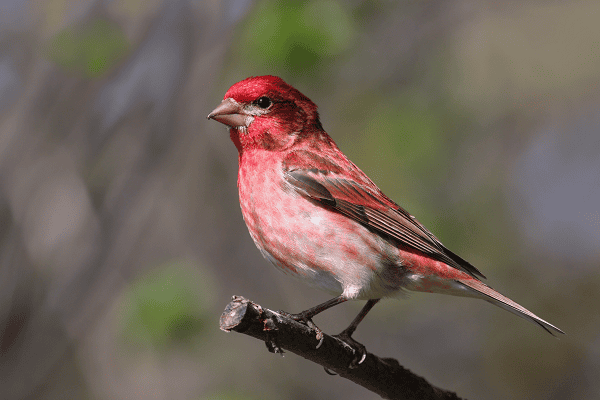
The Purple Finch, scientifically named Haemorhous purpureus, is another species that may be confused with the Red Sparrow Bird. Male Purple Finches, true to their name, display a beautiful raspberry coloration. In contrast, male Red Sparrow Birds have reddish-brown plumage, with a distinct streak pattern on their underparts. Female Purple Finches resemble female House Finches with their plain-colored plumage.
House Sparrow
The House Sparrow, known as Passer domesticus, is one of the most widespread and well-known bird species. It can be found in urban areas, much like the Red Sparrow Bird. However, the Red Sparrow Bird can be distinguished by its reddish-brown plumage and unique streak pattern. House Sparrows have a gray or brown coloring with a black throat patch in males and a plain brown appearance in females.
Cassin’s Finch
The Cassin’s Finch, scientifically named Haemorhous cassinii, is another species that may resemble the Red Sparrow Bird at first glance. Male Cassin’s Finches have a rose-red crown, chest, and rump, but their overall plumage is more streaked and brown compared to the Red Sparrow Bird. Female Cassin’s Finches have a plain, streaked appearance similar to female House Finches.
To summarize, while there may be similarities between the Red Sparrow Bird and other species of sparrows, it’s important to pay attention to key features such as plumage, streak patterns, and coloration to accurately identify each species. The table below provides a visual comparison of these different sparrow species:
| Sparrow Species | Distinctive Features |
|---|---|
| Red Sparrow Bird | Reddish-brown plumage with a distinct streak pattern on the underparts, similar to what you’d see in fox sparrows and red-headed sparrows. |
| House Finch | Red head and breast, streaked and brown plumage |
| Purple Finch | Raspberry coloration in males, plain-colored plumage in females, characteristic of how house finches feed and the fact that the bright red and raspberry coloration in male house finch comes from pigments found in their diet. |
| House Sparrow | Gray or brown coloring, black throat patch in males, plain brown appearance in females |
| Cassin’s Finch | Rose-red crown, chest, and rump in males, streaked and brown plumage |
By understanding and recognizing these distinguishing features, you’ll be able to confidently identify the Red Sparrow Bird and distinguish it from other sparrows in your area.
Conservation and Protection
Learn about the efforts to celebrate urban birds and protect the avian species that inhabit human-altered environments. Organizations like the Cornell Lab of Ornithology are at the forefront of these conservation initiatives, working tirelessly to ensure the well-being and preservation of these magnificent creatures.
The Cornell Lab of Ornithology, a renowned institution dedicated to the study and protection of birds, understands the importance of conserving urban bird populations. Through research, education, and outreach programs, they strive to raise awareness about the unique challenges faced by birds in human-altered environments.
“Bird populations worldwide are facing various threats due to habitat loss, climate change, and other human-induced factors. At the Cornell Lab of Ornithology, we aim to promote the conservation of avian species in urban areas and provide resources to help communities create bird-friendly spaces,”- Dr. John Fitzpatrick, Director of the Cornell Lab of Ornithology
Urban birds play a crucial role in our ecosystems, offering a connection to nature in the midst of bustling cities. By celebrating their presence and taking steps to protect their habitats, we can ensure a thriving avian population and a healthier environment for all.
The Cornell Lab of Ornithology’s Conservation Initiatives
The Cornell Lab of Ornithology focuses on several key areas to protect and preserve urban bird populations:
- Research: Through scientific studies and monitoring efforts, the lab gathers valuable data on urban bird species, their behavior, and their changing patterns in response to urbanization. This information helps identify conservation strategies and informs policy decisions.
- Community Engagement: The lab actively engages with communities, providing resources and knowledge to create bird-friendly spaces in urban areas. Their efforts include promoting native plantings, reducing light pollution, and minimizing the use of pesticides, all of which contribute to a healthier and more welcoming environment for urban birds.
- Educational Programs: The Cornell Lab of Ornithology offers educational programs for bird enthusiasts of all ages. Also, These programs aim to raise awareness about the challenges faced by urban bird populations and empower individuals to contribute to their conservation.
Through these initiatives, the Cornell Lab of Ornithology strives to inspire a collective commitment to the protection of avian species in human-altered environments. By working together, we can ensure that urban birds continue to grace our skies, providing beauty, biodiversity, and a source of wonderment for generations to come.
| Factors Threatening Urban Bird Populations | Conservation Strategies |
|---|---|
| Habitat loss due to urbanization | Promoting the creation of green spaces, including parks and gardens, to provide essential habitats for urban birds. |
| Light and noise pollution | Advocating for the use of bird-friendly lighting and raising awareness about the negative impacts of excessive noise on urban birds. |
| Cats and other predators | Encouraging responsible pet ownership and promoting measures to control feral cat populations in urban areas. |
| Climate change | Supporting initiatives that mitigate the effects of climate change and promote sustainable practices to protect the habitats of urban birds. |
Check Our Previous Articles:
Enjoying the Presence of Red Sparrow Birds
Welcome to the wonderful world of backyard birding! If you’re looking to attract the vibrant Red Sparrow Birds to your own backyard, creating a bird-friendly environment is key. These gorgeous birds with their red-headed plumage are a delight to observe and share your space with. But they won’t be the only ones to grace your yard with their presence – you may also welcome other fascinating bird species.
To attract Red Sparrow Birds, ensure your backyard provides the ideal habitat they seek. Consider adding a variety of bird feeders filled with their favorite seeds, such as millet and sunflower seeds. These feeders will not only entice the Red Sparrow Birds, but they may also attract other bird species, adding to the biodiversity of your backyard.
Keep in mind that Red Sparrow Birds may have some competition when it comes to bird feeders. European Starlings and House Sparrows are known to dominate feeders, so be strategic by offering multiple feeders at different heights and locations to accommodate various bird species. By doing so, you can create an inviting space for the Red Sparrow Birds and discourage monopolizing by other birds.
Remember, when you step into the world of birding, it’s important to respect and observe these beautiful creatures from a distance. While the idea of having pet birds can be enticing, it’s recommended to appreciate them in their natural habitat rather than keeping them as pets. By providing a welcoming backyard environment, you can enjoy the beauty and charm of Red Sparrow Birds while supporting their presence in the avian community.
Frequently Asked Questions
Q1. Is there a red sparrow bird?
No, sparrows typically don’t have red plumage.
Q2. What kind of bird looks like a sparrow but has red on it?
The house finch is often mistaken for a sparrow and can have reddish plumage, especially the males.
Q3. Where do red sparrows live?
Sparrows are found worldwide, but none are specifically known for having red plumage.
Q4. Is there a red finch bird?
Yes, the house finch is a common example of a finch species with red plumage.

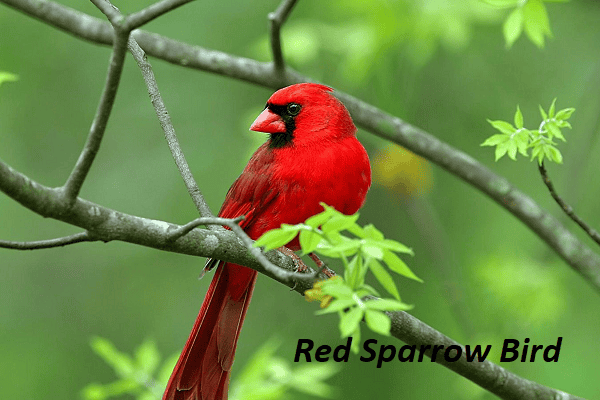
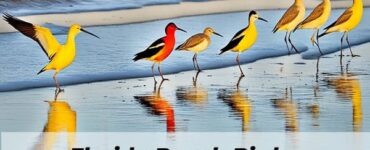
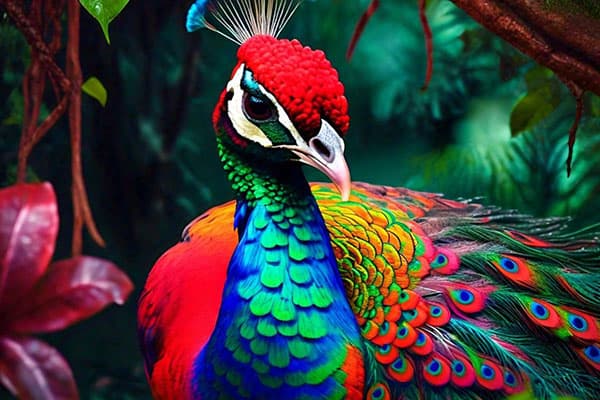
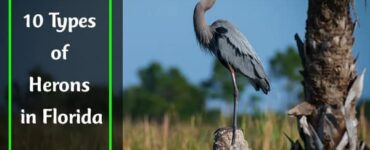
Add comment